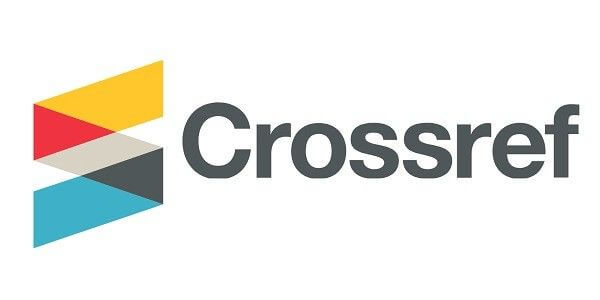The Athletes After Retirement: How are they Doing?
Keywords:
physical self-inventory, human sufferings, retired athletesAbstract
performance of current athletes by building confidence and contributing to favorable conditions of retired athletes. This study investigated the influences of the years of retirement and physical self-inventory on human sufferings experienced by the retired athletes. Based on the literature review, there were limited empirical studies on the conditions of former athletes after years of retirement, their glory, physical inventory, and sufferings, and the relationships among these characteristics. Using mixed research methods, this research studied the conditions of retired athletes in Metro Manila. The study confirmed that physical self-inventory influenced post-retirement human suffering. Post-retirement athletic identity, financial status and decisions to voluntary retire were observed to be the most prevalent experiences related to human suffering. However, retired athletes enjoy experiences with their educational status, other career benefits, health condition, control of lives, management of changes, and the warm support of their families and colleagues.
References
Bernes, K. B. (2009). Life after sport: Athletic career transition and transferable skills. Journal of Excellence, 13, 63-77. Retrieved from http://opus.uleth.ca
Blanco, D. V. (2016). Sports governance stakeholders, actors and policies in the Philippines: Current issues, challenges and future directions. Asia Pacific Journal of Sport and Social Science, 1-9. https://doi.org/10.1080.21640599.2016.1227544
Brinkman, S. (2014). Languages of suffering. Theory and Psychology, 24 (5), 630-648. https://doi.org/10.1177/0959354314531523
Brand, S., Gerber, M., Beck, J., Hatzinger, M., Puhse, U., & Holsboer-Trachsler, E. (2010). High exercise levels are favorable to sleep patterns and psychological functioning in adolescents: A comparison of athletes and control. Journal of Adolescent Health, 46, 133-141. https://doi.org/10.1016/j.jadohealth.2009.06.018
Beehr, T. A. & Bennett, M. M. (2015). Working after retirement: Features of bridge employment and research directions. Work, Aging and Retirement, 1(1), 112–128. https://doi.org/10.1093/workar/wau007
Bollousa, D. A., Abreu, L., Varela-Sanz, A. & Mujica I. (2013). Do Olympic Athletes train in the Paleolithic era? Sports Medicine, 43, 909-917. https://doi.org/10.1007/s40279-013-0086-1
Cloninger, C. R. & Zohar, A. H. (2011). Personality and the perception of health and happiness. Journal of Affective Disorders, 128, 24-32. https://doi.org/10.1016/j.jad.2010.06.012
Cosh, S., Crabb, S. & LeCouteur, A. (2012). Elite athletes and retirement: Identity, choice and agency. Australian Journal of Psychology, 2012, 1-9. https://doi.org/10.1111/j.1742-9536.2012.00060.x
Cosh, S., Crabb, S. & Tully, P. J. (2015). A champion out of the pool? A discursive exploration of two Australian Olympic swimmers' transition from elite sport to retirement. Psychology of Sport and Exercise 19(2015), 33-41. https://doi.org/10.1016/j.psychsport.2015.02.006
Cover, R. (2017). The lived experience of retired college athletes with a history of 1 or more concussions. South Dakota State University Open PRAIRIE: Open Public Research Access Institutional Repository and Information Exchange. Retrieved from: h8p://openprairie.sdstate.edu/etd
Daigle, B. (2016). Longitudinal examination of perceived stress and depression symptomology in Division I Student- Athletes. South Dakota State University Open PRAIRIE: Open Public Research Access Institutional Repository and Information Exchange. Retrieved from: h8p://openprairie.sdstate.edu/etd
Debois, N., Ledon, A. & Wylleman, P. (2014). A lifespan perspective on the dual career of elite male athletes. Psychology of Sport and Exercise, 2014, 1-12. https://doi.org/10.1016/j.psychsport.2014.07.011
De Bosscher, V., Shibli, S., Van Bottenburg, M., De Knop, P. & Truyens, J. (2010). Developing a method for comparing the elite sport systems and policies of nations: A mixed research methods approach. Journal of Sport Management, 24, 567-600. Retrieved from https://dspace.library.uu.nl/bitstream/handle/1874/203933/567-600[1].pdf?sequence=1
DosSantos, A. L. P., Nogueira, M. DP. G. R. & Bohme, M. T. S. (2016). Elite athletes’ perception of retirement support systems. International Journal of Physical Education, Sports and Health, 3(1), 192-199. P-ISSN: 2394-1685
Effelsberg, D., Solga, M., & Gurt J. (2014). Getting followers to transcend their self-interest for the benefit of their company: Testing a core assumption of transformational leadership theory. Journal of Business Psychology, 29, 131-143. https://doi.org/10.1007/s10869-013-9305-x
Emile, M., Chalabaev, A., Stephan, Y., Corrion, K. & d’Arripe-Longueville, F. (2013). Aging stereotypes and active lifestyle: Personal correlates of stereotype internalization and relationships with level of physical activity among older adults. Psychology of sport and exercise, 2013. https://doi.org/10.1016/j.psychsport.2013.11.002
Fox, K. R. & Corbin, C. B. (1989). The physical self-perception profile: Development and preliminary validation. Journal of Sport and Exercise Psychology, 11, 408-430. https://doi.org/10.1123/jsep.11.4.408
Golden, C. R. (2011). Student athletes' perceptions of academic support, career support and personal support. Unpublished paper. Retrieved from: h7p://thekeep.eiu.edu/theses/153
Hernandez, M. (2012). Toward an understanding of the psychology of stewardship. Academy of Management Review, 37(2), 172-193. https://doi.org/10.5465/amr.2010.0363
Hatamleh, M. R. (2013). The life transitions of high performance athletes retirement from sport. European Scientific Journal, 9, 11. ISSN: 1857 – 7881 (Print) e - ISSN 1857- 7431
Iglesias-Gutierrez, E., Garcia-Roves, P. M., Garcia, A., & Patterson, A. M. (2008). Food preferences do not influence adolescent high-level athletes’ dietary intake. Appetite, 50, 536-540. https://doi.org/10.1016/j.appet.2007.11.003
Kadlcik, J. & Flemr, L. (2008). Athletic career termination model in Czech Republic: A qualitative exploration. International Review for the Sociology of Sport, 43(3), 251-269. Retrieved from: http://irs.sagepub.com
Klassen, R. M., Krawchuck, L. L., Lynch, S. L. & Rajani, S. (2008). Procrastination and motivation of Undergraduates with learning disabilities: A mixed-methods inquiry. Learning Disabilities Research & Practice, 23 (3), 137–147. Retrieved from http://www.academia.edu/
Koonce, G. E. J. (2013). Role transition of National Football League retired Athletes: A grounded theory approach. 23 Marquette Sports Law Review, 23 (2), 250-338. Retrieved from: http://scholarship.law.marquette.edu/sportslaw/vol23/iss2/10
Li, L. (2017). Study on Chinese retired athletes job placement countermeasure based on Bayes Discriminant Analysis classification method. Revista de la Facultad de Ingeniería U.C.V., 32(5), 416-422.
Li, Y. R., Niu, C. & Quian, J. X. (2016). Dissociation and Missing: Evaluation of Athletes' Disability Security System in China. 2016 2nd International Conference on Modern Education and Social Science (MESS 20160). ISBN: 978-1-60595-346-5.
Maiano, C., Morin, A. J. S., Ninot, G., Monthuy-Blanc, J., Stephan, Y., Florent, J. F., & Vallee, P. (2008). A short and very short form of the physical self-inventory for adolescents: Development and factor validity. Psychology of Sport and Exercise, 9, 830–847. https://doi.org/10.1016/j.psychsport.2007.10.00
McKnight, K. M., Bernes, K. B., Gunn, T., Chorney, D., Orr, D. T., & Bardick, A. D. (2009). Life After Sport: Athletic Career Transition and Transferable Skills. Journal of Excellence, 13, 63-77. Retrieved from http://hdl.handle.net/10133/1175
McMillan, W. (2016). The phenomenological analysis of psychospiritual transformation in athletic retirement and everyday narcissism in former athletes. University of Lethbridge Research Repository. Retrieved from: http://hdl.handle.net/10133/4450
Maffulli, N., Longo, U. G., Spiezia, F. & Denaro V. (2010). Sports injuries in young athletes: Long-term outcome and prevention strategies. The Physician and Sports Medicine, 2 (38), 29-34. ISSN – 0091-3847
Mohamed, Z. (2017). The reflection physical education and sports on configuration self- physical in adolescents. International Journal of Fitness Health, Physical Education and Iron Games, 4(2), 62-69. Retrieved from: https://www.researchgate.net/publication/325742983
O'Brien, J. C. & Eller, C. (2016). Representing retired athletes. Arts, Sports & Law. Hennepin Lawyer, 12-14. Retrieved from: thl@hcba.org
Park, S. & Lavallee, D. (2015). Roles and influences of Olympic athletes’ entourages in athletes’ preparation for career transition out of sport. Sport and Exercise Psychology Review, 11 (1), 3-19. ISSN: 1745-4980.
Park, S., Lavallee, D., & Tod, D. (2012). Athletes’ career transit ion out of sport. International Review of Sport and Exercise Psychology, 6, 22-53.
Polit, D. F., & Beck, C. T. (2010). Generalization in quantitative and qualitative research: Myths and strategies. International Journal of Nursing Studies, 47, 1451-1458. https://doi.org/10.1016/j.ijnurstu.2010.06.004
Potgieter, S. (2013). Sport nutrition: A review of the latest guidelines for exercise and sport nutrition from the American College of Sport Nutrition, the International Olympic Committee and the International Society for Sports Nutrition. South African Journal of Clinical Nutrition, 26(1), 6-16.
Runeson, P., & Host, M. (2009). Guidelines for conducting and reporting case study research in software engineering. Empirical Software Engineering, 14(2), 131-164. https://doi.org/10.1007/s10664-008-9102-8
Saunders, M., Lewis, P., & Thornhill, A. (2010). Research Methods for Business Students (5th ed.). Philippines: Pearson Education.
Thompson, W. R. (2018). Worldwide survey of fitness trends: The CREP edition. American College of Sports Medicine (ACSM's) Health and Fitness Journal.
Tshube, T. & Feltz, D. L. (2015). The relationship between dual- career and post-sport career transition among elite athletes in South Africa, Botswana, Namibia and Zimbabwe. Psychology of Sport & Exercise. https://doi.org/10.1016/j.psychsport.2015.05.005
Tulle, E. (2008). Acting your age? Sports science and the ageing body. Journal of Aging Studies, 22, 340-347. https://doi.org/10.1016/j.jaging.2008.05.005
Wessa P. (2017). Cronbach alpha (v1.0.5) in Free Statistics Software (v1.2.1), Office for Research Development and Education. Retrieved from: https://www.wessa.net/rwasp_cronbach.wasp/
Villanova A. & Puig, N. (2014). Personal strategies for managing a second career: The experiences of Spanish Olympians. International Review for the Sociology of Sport, 1–18. https://doi.org/10.1177/1012690214536168
Wiles, R., Crow, G., Heath, S., & Charles, V. (2008). The management of confidentiality and anonymity in social research. International Journal of Social Research Methodology, 11(5), 417-428. Retrieved from http://eprints.ncrm.ac.uk/651/1/The_Management_of_Confidentiality_and_Anonymity_in_ Social_Research.pdf
- PDF | 336
- Abstract Views | 484
Published
How to Cite
Issue
Section
Copyright (c) 2023 Bayani Matitu, Rosalinda Santiago, Michael Pasco

This work is licensed under a Creative Commons Attribution-NonCommercial-NoDerivatives 4.0 International License.











